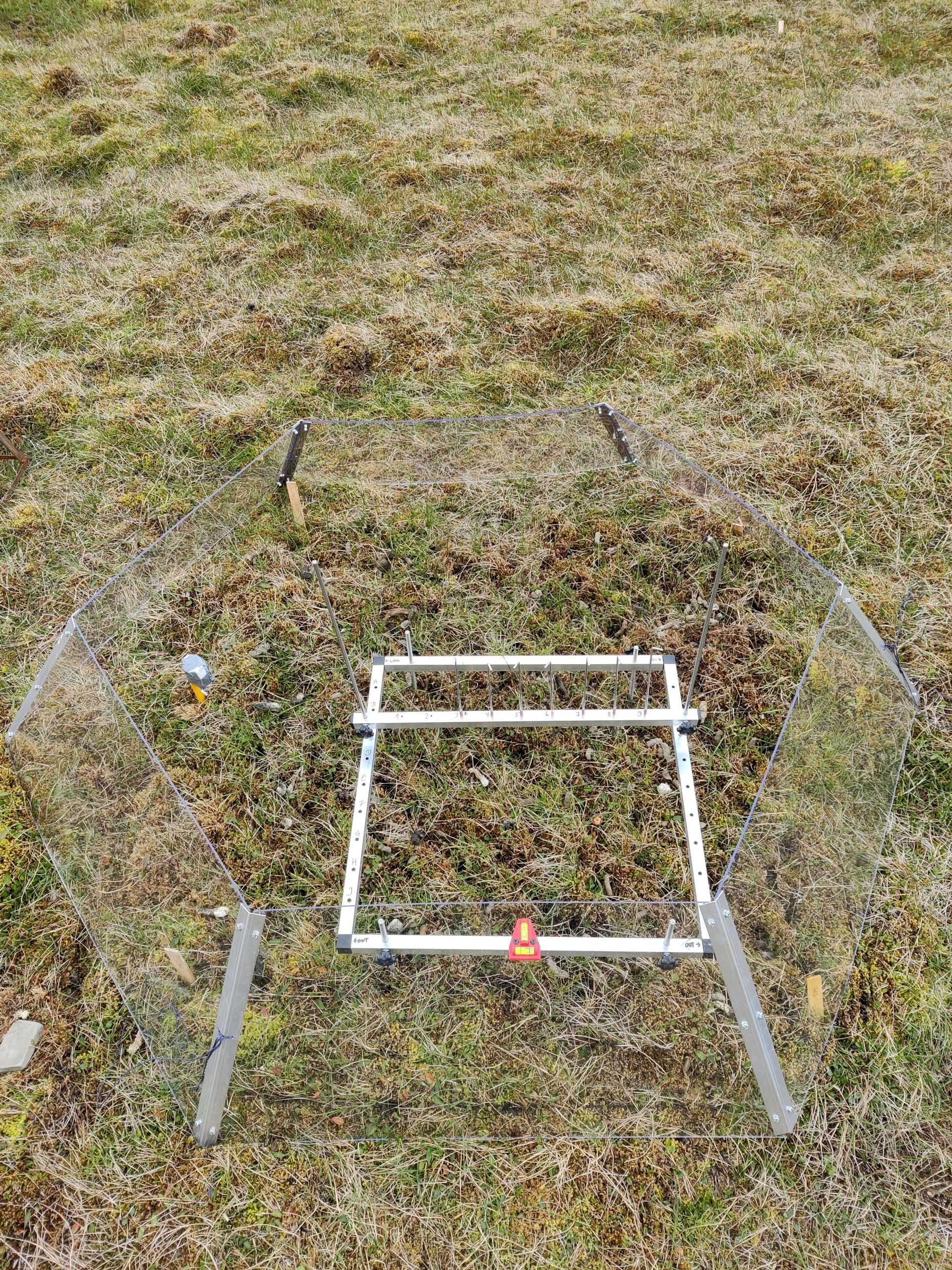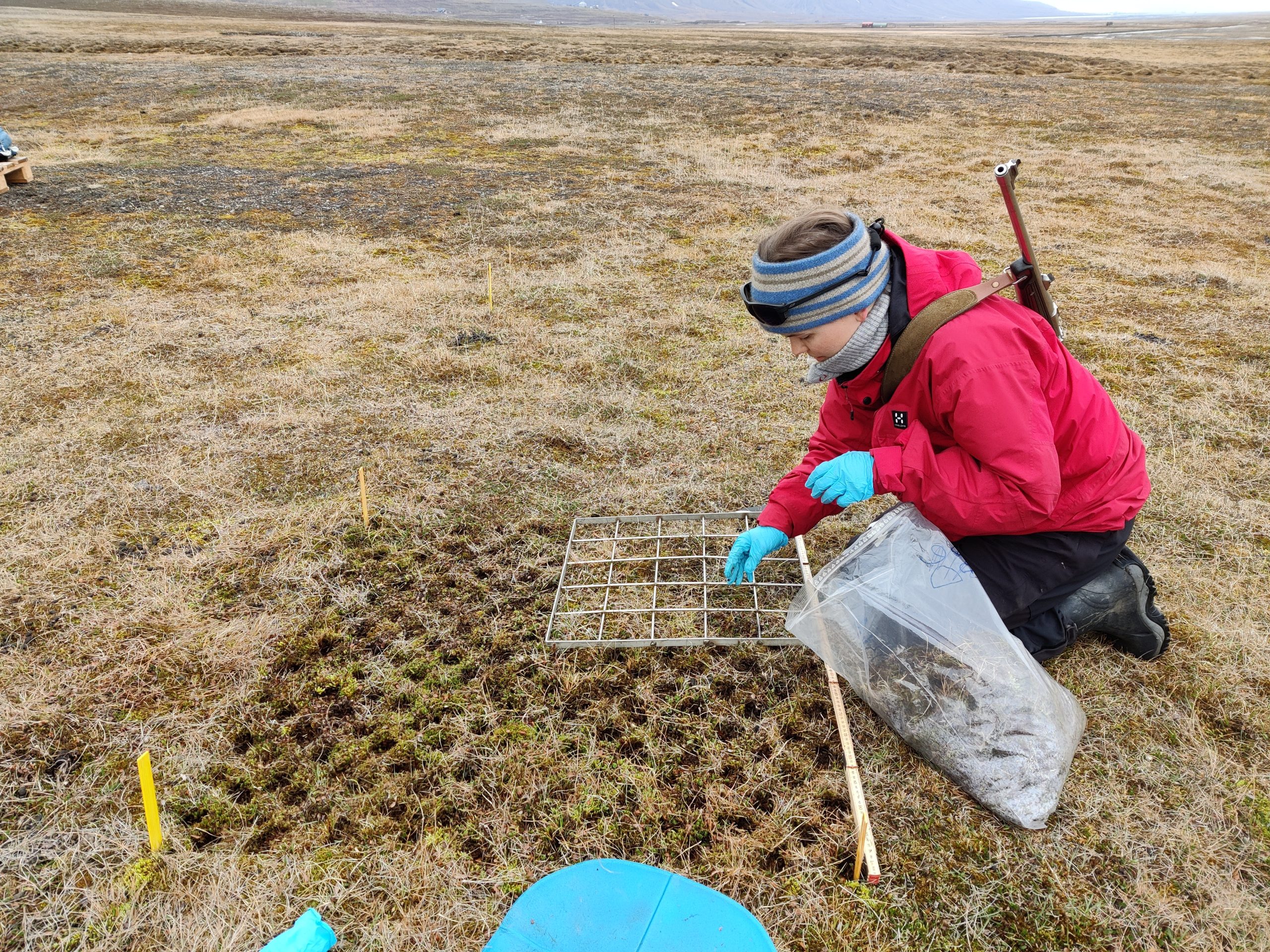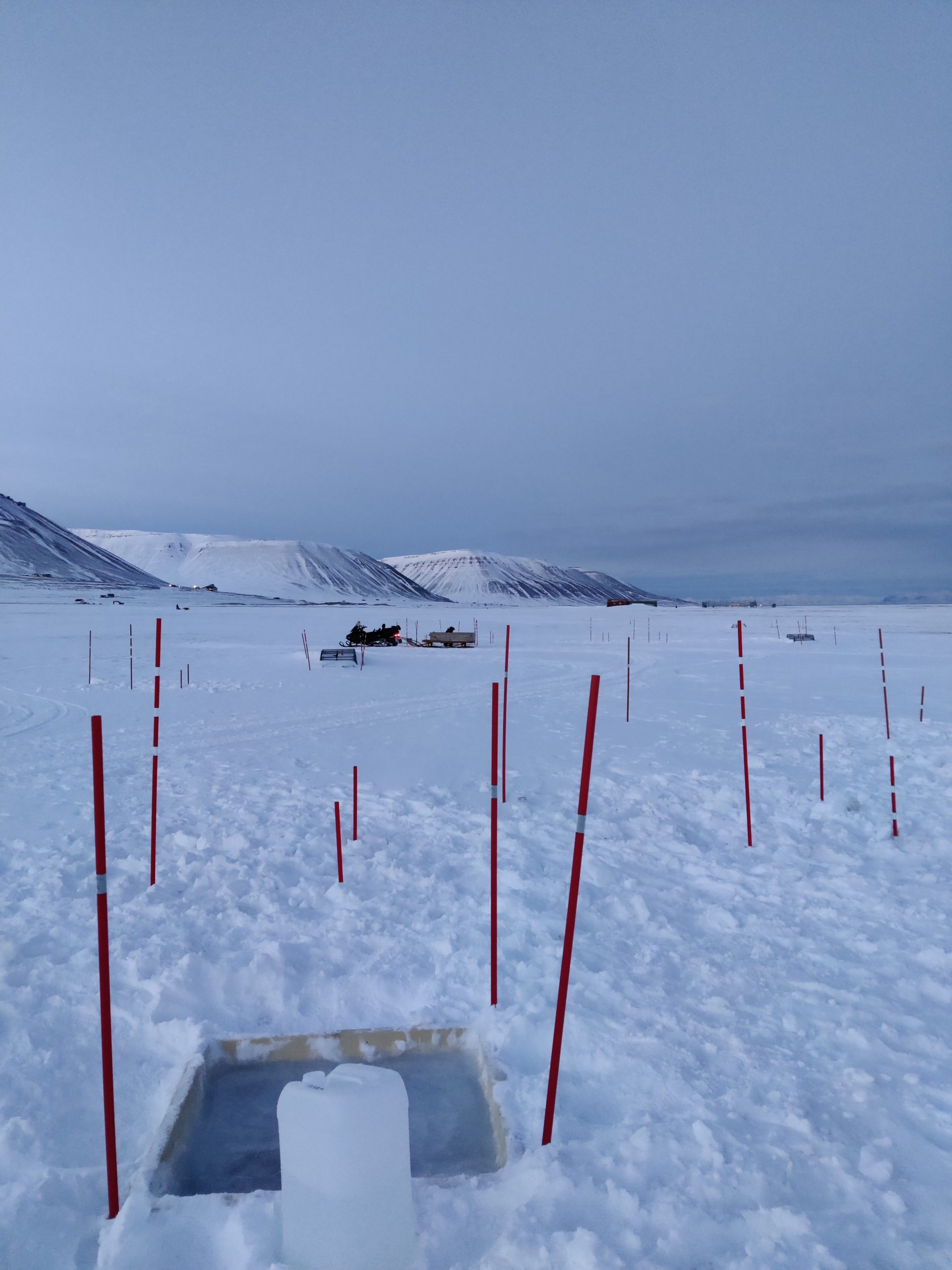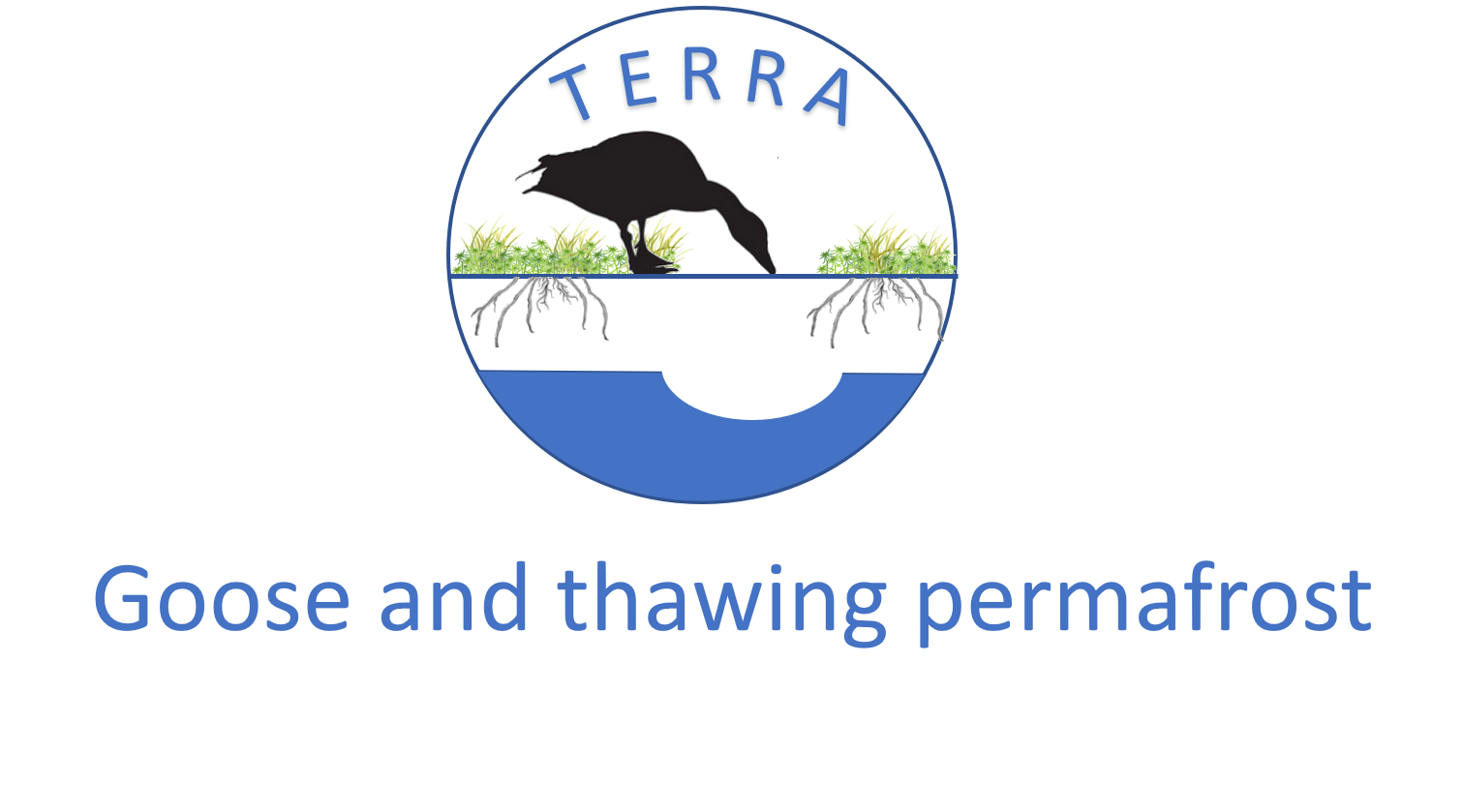The arctic tundra typically consists of a mosaic of different vegetation types due to topographic and microclimate differences, with large variations in biogeochemical soil properties. In this research project, we are working along gradients of moisture and nutrient availability to integrate this spatial heterogeneity and to produce results relevant across important arctic ecosystem.
The TERRA project has two different but complementary angles:
1. Understanding the interactive effects of climate change and goose grubbing under controlled lab conditions (soil incubations). We selected two habitats widely used by pink-footed geese, a dry and a wet moss tundra and sites with high and low grubbing intensity. We manipulate soil temperature, soil moisture and microbial communities by biota inoculation from the permafrost layer.


2. Understanding the interactive effects of climate change and goose grubbing experimentally by field manipulation. We selected the two most common habitats in the High Arctic tundra, a moist moss tundra and a mesic moss tundra (habitat less preferred by geese). We experimentally manipulate temperature, rain on snow events (ROS) and grubbing. This is our main experimental set up.
In each habitat, five experimental blocks have been selected to have abiotic conditions and vegetation as similar as possible. In each block, six experimental plots were randomly allocated to the following treatment: Control (C), Goose grubbing (G), heavy ROS (R), heavy ROS + autumn and spring Warming (RG) autumn and spring Warming + goose grubbing (WG).

Goose grubbing is simulated in early spring by creating holes in the vegetation, fragmenting roots and the deposition of fresh goose faeces. The rain on snow event is simulated in February by creating a think ground ice layer by pouring snow and cold water into a wooden frames. Finally, open top chambers (small greenhouse chambers) are used to increase air temperature during each spring and autumn for the warming treatment.



